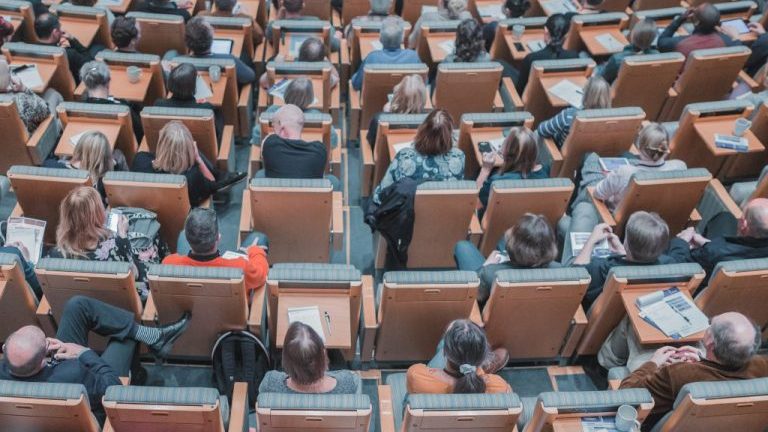
IIeX Behaviour focuses on the current advancements and trends in behavioural sciences and non-conscious testing in market research. This year in London there was a notable focus on how the field is moving towards being more accessible and faster to implement
These are five thought provoking take-outs from the day.
there’s More Than System 1 and 2 Thinking
The terms System 1 and 2 were mentioned regularly throughout the conference. Daniel Kahneman’s theory has clearly inspired a lot of behavioural science based research methodologies. This inspired Leigh Caldwell from the Irrational Agency to talk about there being more than two systems, and the theory of a third system for how we process information.
System 3 features whenever we want to imagine our future, using the past to do so. Whether we are thinking of buying a new car or deciding to book a holiday, System 3 kicks-in and plays on our memories to help predict the potential outcome. This theory is taken from Prospection Psychology – the mind simulating a scenario in which we may be faced with tapping into resources from both System 1 and 2.
behavioural economics repackaged can be a researcher’s best friend
Caroline Hayter from Acacia Avenue spoke about how behavioural economics should be a key research tool. The field has faced some criticism for using old techniques that have been re-packaged with fancy names. The panel agreed that this shouldn’t be taken as a criticism. If behavioural economics is making a difference then it should be championed and used as an asset for all researchers. In fact, using some of the techniques that have been around for a while such as priming and framing, in the real world helps clients understand the use and benefits. For example, encouraging people to send in their tax returns on-time has been improved by framing their HMRC letter using statistics of how many people end-up sending theirs in late, is one key use of behavioural insights.
stay true to theory to win at automation
A clear theme of the conference was how technology has helped change the behavioural sciences landscape. The gap between technology and research has clearly become very slim. Furthermore, the trend of automation is rife in research whether that be through dashboards or questionnaire design. Aaron Reid at Sentient spoke about the wealth of technological companies that are now established in measuring behaviour either through eye-tracking, facial coding or Implicit Association Testing (IAT). There are many platforms that are now speeding up the research process and the automation of behavioural science is fundamental to the future of the research industry.
Within behavioural science automation, the techniques that stay true to the theory behind them will prove to be the most effective. Simply put, if you want speed and automation you need to have reliability behind your measurement technique. If not, you will spend wasted time trying to make sense of your findings. The tools that are currently being used have the staying power and have made it through the initial hype around non-conscious measurement. It will now be interesting to watch as newer companies try and establish themselves in the era of automation.
mix minds for methodological success
Research has merged fields for its benefit before. Behavioural sciences and economics have been merged into behavioural economics for example. That was another key theme of one of the talks, merging of two fields that can be blended together to uncover insights. Will Leach at Trigger Point spoke passionately about how his company helped with the designing of the branding for Wicked Crisps. Everything from the name of the logo on the packet, to the design of the font, were tested with a view to tapping into a person’s unconscious thinking using metaphor’s to do so.
This provided fascinating insight into another merging of fields where behavioural sciences and design can work with each other. Designers shouldn’t just be left to create, their knowledge of imagery, and aesthetics can be a toolbox for giving a specialized view for a range of uses such as product placement, imagery, packaging, and brand fluency. With recent rises in fields such neuro-aesthetics the designers eye can be important for helping to tap into behaviours and communicate brand messages in more subtle ways.
communication is key for clients
To round off the day there was a client panel session. This was a fascinating session which emphasized some of the worries that clients face around using behavioural sciences and how these reservations can be appeased through clear communication.
There is sometimes a misrepresentation of behavioural sciences as being a black box of tricks that most people may not understand. The panel emphasized that this shouldn’t be the case. It was argued that neither should these techniques be clouded by the drier complicated terminology that may come with them. Simpler terms where applicable should be used to communicate ideas back to clients, so that stakeholders at all levels can interpret the findings without an instructions manual. This is a fine balance, as the little moments that behavioural sciences can measure have shown to be actionable and vital in understanding key moments. Therefore, reliable theory still needs to be applied to unearth this, finding a blend is the ideal world for clients.
By Dipesh Mistry, was a Senior Research Executive at Northstar
if you would like further information, please get in touch via:
info@northstarpresents-volvo.com




